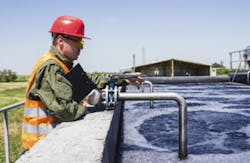$7B Spent Annually on Filtration & Separation Product Quality and Recovery Market
The markets for filtration and separation equipment and services can be segmented based on four major process categories: water intake and purification; Cooling and auxiliary process support; wastewater treatment; and product quality and recovery.
According to a new McIlvaine Company analysis, the $7 billion/year product quality and recovery market is the most profitable segment of the filtration and separation industry. Filtration and separation is critical to product quality and recovery in food and beverage; chemicals; pharmaceuticals; and petroleum products.
The safety, color, consistency, taste and other qualities affecting food and beverage salability are modified by centrifuges, cartridges, filter presses, cross-flow membranes, automatic backwash filters, and filter bags.
Many chemical processes are a series of filtration and separation stages. Separation of the final product from the intermediate is a major stage in pharmaceutical preparation. Product purification is a series of filtration and separation stages in petroleum refining.
READ ALSO: US Membrane Demand to Reach $6.2B in 2018
The largest single-use of filtration and separation to improve product quality is in direct liquefaction of coal. The steps are size reduction, filtration and hydrogenation. The cost of thermal treatment used in conventional indirect gasification is avoided. A large coal liquefaction plant would have a filtration investment of over $50 million.
McIlvaine Company says the filtration and separation profit margins from the segments dealing with product quality are higher than other segments for the following reasons:
- Higher investment is easily justified by a better product.
- Each application technology is unique. This creates a barrier to entry for those suppliers without the knowledge.
The product quality and recovery applications are addressed in the following McIlvaine publications:
N024 Cartridge Filters: World Market
